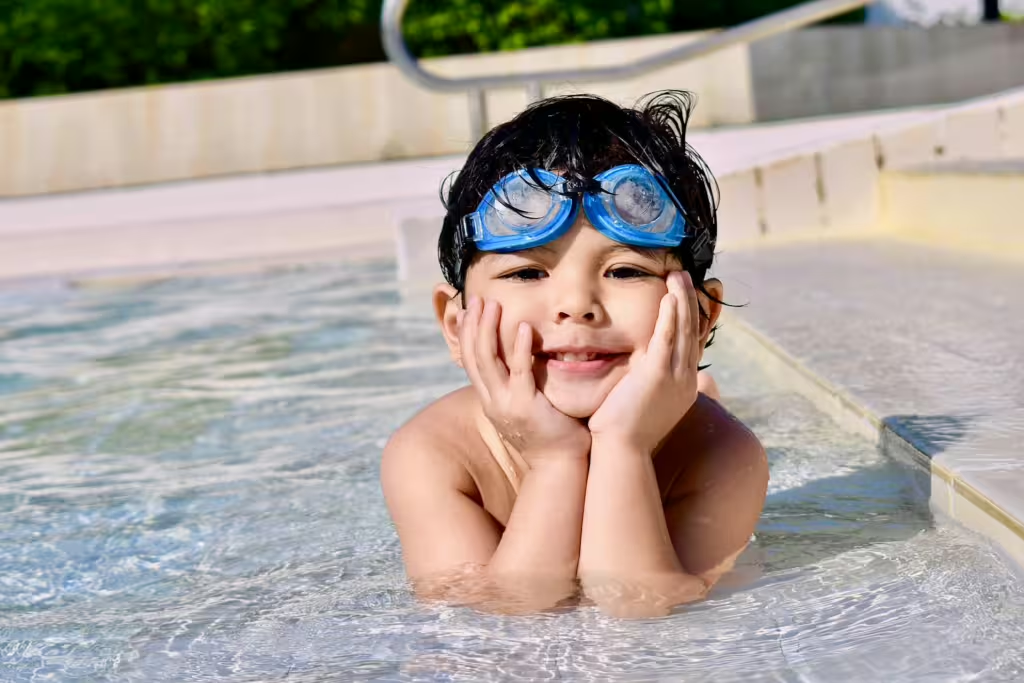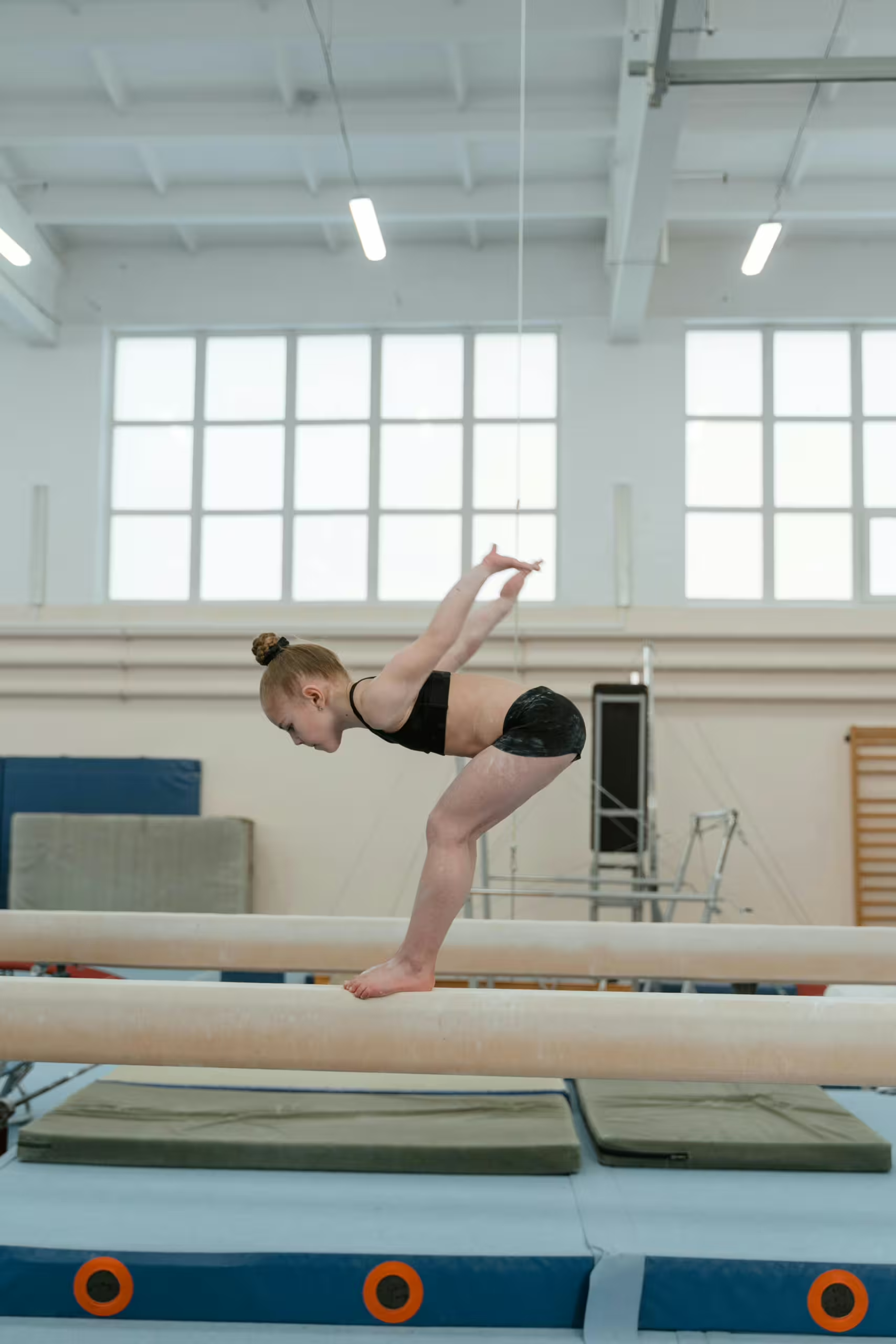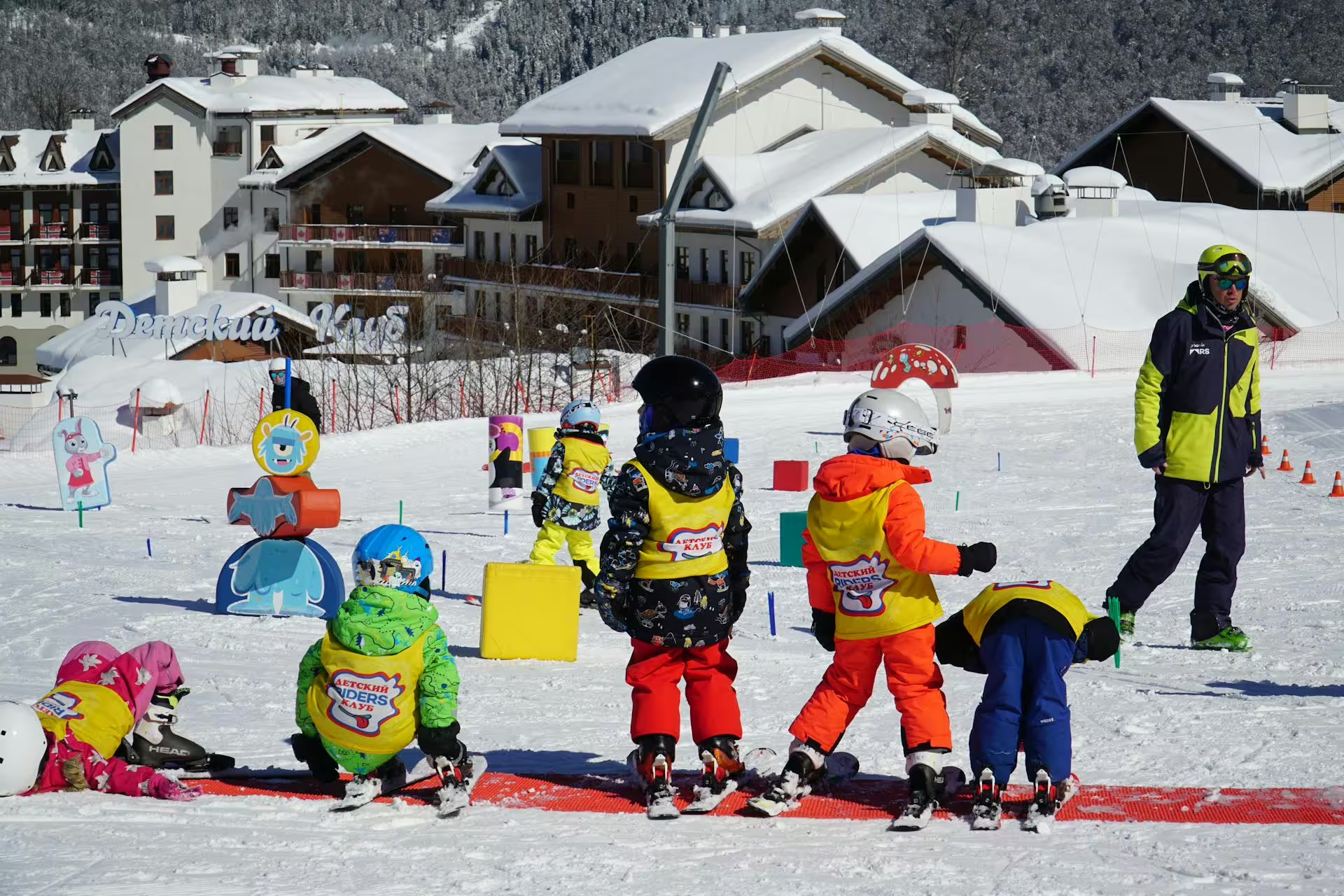With Spring and Summer just around the corner, many expectant parents will be looking for ways to teach their children how to swim before the season arrives. According to a survey from the CDC back in 2024, nearly 79% of children in low income houses don’t know how to swim. Obviously that percentage is higher among affluent people, but the reality remains the same; far fewer children know how to swim than they should in the United States. Now, a lot of this has to do with extenuating circumstances such as prohibitive costs for swim lessons, lack of time, or even lack of access to swimming pools and other such locations. However, some of the blame can be placed on the fact that some parents don’t really know where to start when it comes to swimming.
Swimming is an essential skill that all children should learn at some point, as knowing how to swim can save theirs or someone else’s life one day. That said, it doesn’t have to be a chore, it can also be a fun activity. Swimming offers them an exciting way to improve their physical health, coordination, and confidence when they are in the water.
The thing is, not every child is immediately comfortable in the water, and some might even develop fears or anxieties about swimming prior or during their first couple of swim lessons. As a parent, you are well-placed to create a positive and fun atmosphere around swimming. We parents can help our children to become confident and fully embrace this enjoyable activity.
In this article, we will offer parents some great tips to ensure that their children finds joy and develop the skills they need to succeed and thrive in the water.
Start with a Positive Attitude
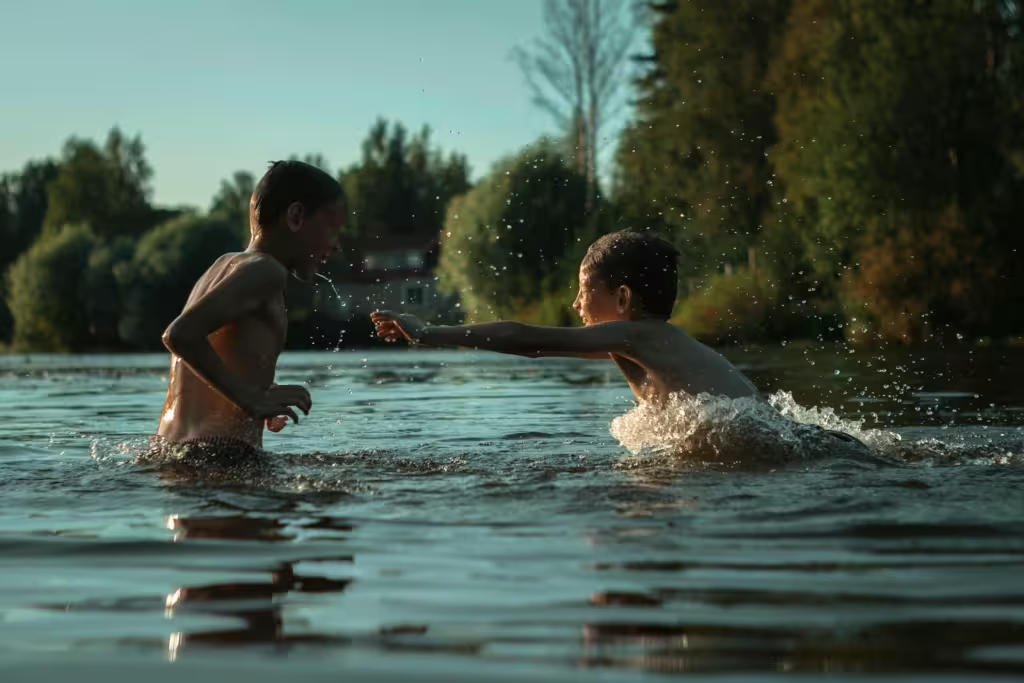
Most parents who enjoy swimming themselves, will likely have no issue convincing their children to enjoy the water. This isn’t always the case, as kids will be kids, but for the most part, children mimic our attitudes and aptitudes in many ways. They see us having fun at the beach, surfing, or swimming in the pool and they will feel similarly about it. By now, most parents understand that children are quite keen at observing each and every thing we say and do. This includes our emotions and reactions to things. Therefore, if you’re enthusiastic and positive about swimming, they’ll likely pick up on that energy and feel the same way about it.
Fear not, though, even if you have your own reservations, you can still find ways to impress the joy of swimming upon your kids. For instance, try to approach swimming as an exciting adventure. Your excitement will act as a model for your kid. Above all else, it’s important to remain patient, even if your young swimmer seems hesitant or nervous about taking a dip. Remember, a cheerful attitude can help minimize even the most debilitating apprehensions.
Choose the Right Pool or Swimming Location
When picking a pool or swimming spot for your child, location is going to be an important consideration. Those of us who don’t live near or have access to these locations might struggle to find one, but when we do, it’s important that we find one that’s safe, welcoming, and child-friendly. Pools with shallow areas, warm water, and engaging features like fountains, slides, and gentle waves are ideal for younger children, especially if they have little or no experience with the water. If your child is new to swimming, try and choose a pool with a gradual incline rather than a steep drop-off. Outdoor water parks with interactive areas, such as kiddie pool zones, can also enhance the experience and make swimming a more entertaining enterprise; even if they don’t actually need to swim whilst they play in it. The ideal place would be any calm, clean environment, as it will ensure that your child feels comfortable and secure.
Invest in Fun Swim Gear
If there is one thing this writer has learned as a parent, it’s that children love to accessorize. It’s true! If an activity comes with some sort of cool accessories, my kids are that much more excited about engaging with it. Swimming comes with all sorts of fun accouterment. Kids can fee free to pick out their own swimwear, their goggles, swimmies, pool noodles, boogie boards, or any other floatation device that tickles their fancy. Many of these items feature images of their favorite characters and come in a wide variety of colors.
Accessories like colorful diving rings and inflatable pool toys can add a playful touch to any swim experience, which can help the child reel more excited about the prospect of swimming. Having them feature their favorite colors or characters, and especially allowing them to pick those things out themselves, can go a long way towards feeling confident and in control of the situation.
Make Learning to Swim a Game
Learning to swim should never feel as serious as it actually is, especially where kids are concerned. Rather than turning it into a strict lesson, try making it into a game. By turning swimming into a game, your child will more readily associate the water with fun rather than pressure or severity. Here are a few swimming games to try with your children:
Treasure Hunt: Play this game by tossing floating toys or sinking rings into the pool and encouraging your child to retrieve them. This game is also scalable. That means that you can play it with sinking pool toys later on and even in deeper waters as your child’s swimming skills improve.
Red Light, Green Light: Have your child swim when you say “green light” and stop when you say “red light.” This game teaches kids how to tread water and float in equal measure if done correctly.
Shark and Minnows: In this classic game, one player (the shark) tries to tag the others (the minnows) in the water. It’s basically water tag with extra fantastical definitions, but kids eat it up for just that reason.
Underwater Obstacle Course: If your child likes obstacle courses on dry land, they may also enjoy more complex ones that you build in the pool. Try using pool rings or floating objects and having the child navigate through them as they make their way around the pool.
Enroll in Group Swimming Classes
By and large, kids enjoy any activity that involves other children. Even if swimming may seem like a solitary enterprise, it’s important to remember that many other children are at the same stage of swim lessons as your own. As such, having peers engaging with the same, often daunting, task of swimming may make it that much more palatable for your little swimmer. This is why we often suggest that parents try enrolling their child in group swimming lessons.
These types of lessons can make the experience more social and fun for them, while fostering social connections that can continue even once they dry off. Group lessons give children the chance to bond with their peers and to witness other kids having fun in the water. This shared experience can be a big motivator. Kids who swim with peers might even be more willing to participate and improve their swimming skills than they did when you tried to teach them on their own.
Incorporate Water Games Outside the Pool
If you’re not always able to get to the pool or if you don’t have access to one, worry not! There are plenty of ways to keep the love of water alive, even outside the pool. One way of doing this is to set up a backyard sprinkler or a slip-and-slide. Heck, many kiddie pools are affordable and easy to store these days and provide a nice amount of splashy fun, even if its in a small space. Water balloons or water guns can also provide hours of entertainment for children. Fun water activities will keep kids excited about being in the water, even when it’s not their dedicated swim day.
Plan Pool Playdates
Swimming becomes eminently more enjoyable when it can be shared with a good friend. Parents should take time to plan pool playdates with their child’s friend to create a sense of camaraderie and shared enjoyment. As before, kids are more likely to feel encouraged and comfortable if they see their friends swimming nearby. They might even be more open to trying new things or taking more chances!
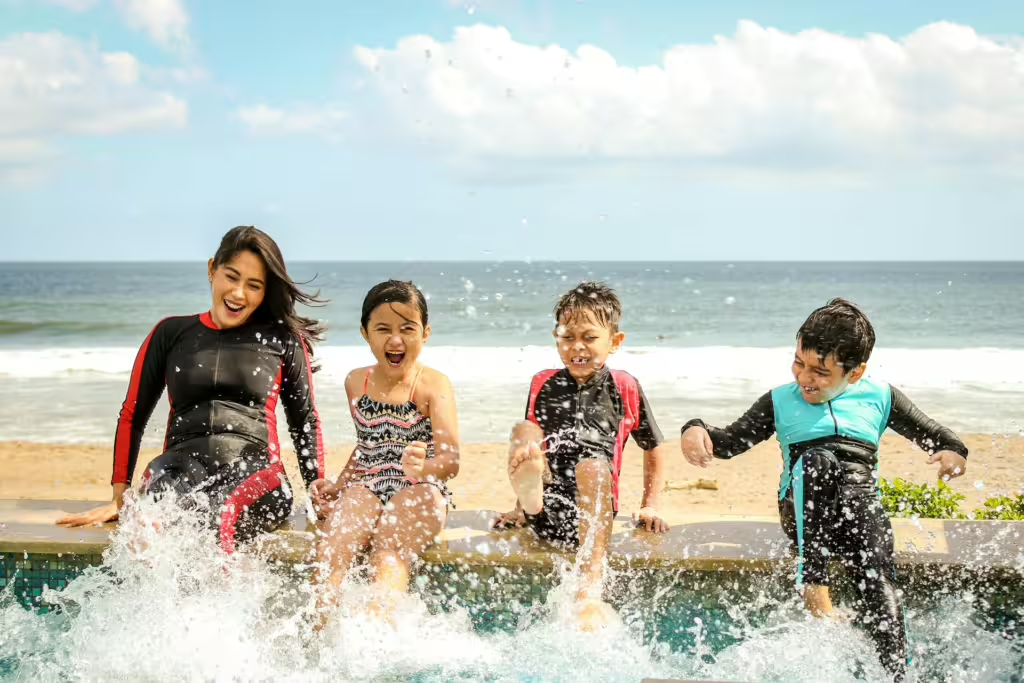
Incorporate Music and Toys
Bring the fun into swimming with additional toys and music! Waterproof toys like floating animals or colorful balls can add an element of surprise, familiarity, and excitement to any pool time. Also, thanks to the marvelous advances in technology, you can now bring along a waterproof speaker so that you can play your child’s favorite songs while they swim. Games like “freeze dance,” when played in the pool can combine their a kid’s love of music with the joy of swimming, making the experience feel like a mini dance party for everyone involved!
Use Positive Reinforcement
Celebrating progress is key to building confidence in any young athlete, swimmers included. When they are first starting out, you want to avoid focusing on perfect strokes and instead praise them for the small victories, such as putting their face in the water, floating on their back, or kicking properly. Always remember, positive reinforcement encourages kids to keep trying, even if they are struggling. Moreover, it helps them to feel accomplished, no matter their skill level. Recognizing any and all of their achievements, no matter how small, builds a child’s self-esteem and motivates them to keep learning and getting better every time they jump into the pool.
Be Patient with Fears
It’s normal for some children to feel anxious or fearful about swimming, which is why it is so crucial that parents are patient and understanding about the whole process. You never, ever, ever want to force your child into the water if they’re not ready. Instead, try and take things more slowly—start with wetting their feet at the edge, then move to wading in shallow water, and gradually progress to deeper sections of the pool. Remember to let your child take their time so that they build their comfort and confidence at their own pace.
Establish a Routine with Rewards
The best way to make swimming a habit is by integrating it into your child’s routine. Parents should try to schedule regular swim days, each week in order to keep the momentum going. This will also ensure that they retain knowledge between sessions. Also, following each swim session, reward your child with something small, such as a fun snack, extra playtime, or a special activity. Associating swimming with positive reinforcement will go a long way towards ensuring that it remains something the child looks forward to and enjoys.
Keep It Safe
While fun is essential, safety should always be the first thing on your mind. Frankly, we assume that this was the reason that you wanted to teach your child how to swim in the first place! Always supervise your kid when they’re in or around the water. Teach your child the most basic water safety skills, such as how to float on their back and how to hold their breath underwater. Always make sure your child wears appropriate floatation devices when they are in the water.
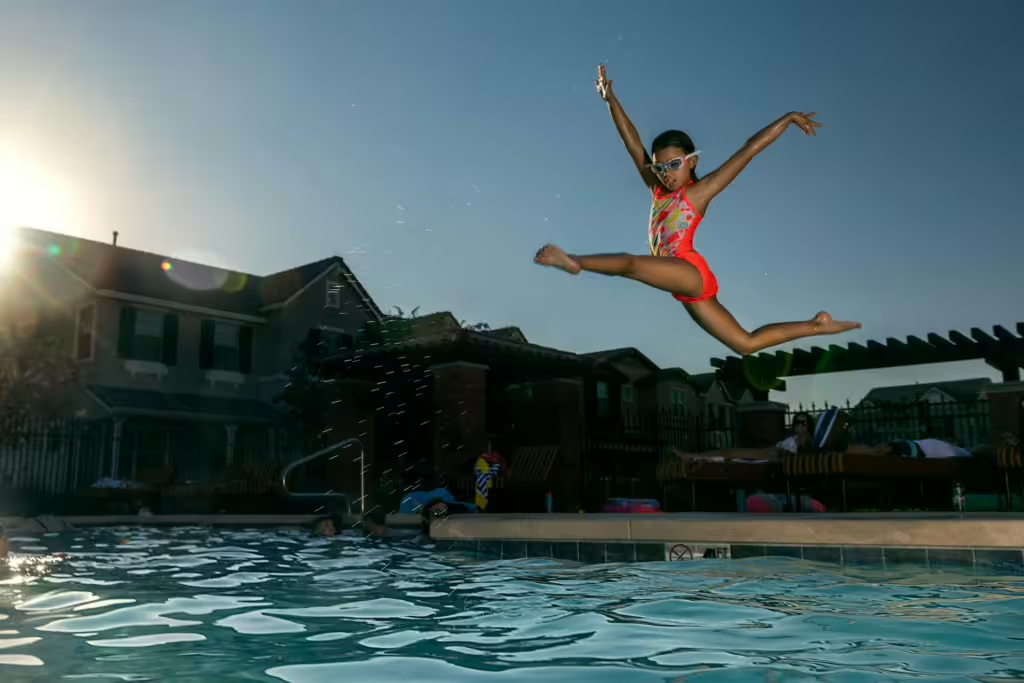
Cultured Athlete Says…
As you can see, the best way to make sure your child learns how to swim is by making it more fun for them! Teaching a child about anything when it comes to sports or physical fitness should be more about creating an enjoyable and positive experience whenever possible. Through encouragement, creativity, and patience, even the most worrisome parents can help their child develop a lifelong love for swimming that will keep them safer in the water. The best way to do this is by incorporating games, challenges, music, and social activities into the lessons; all of which can ensure that swim time becomes an exciting and cherished part of your child’s routine.
Discover more from CulturedAthlete
Subscribe to get the latest posts sent to your email.

